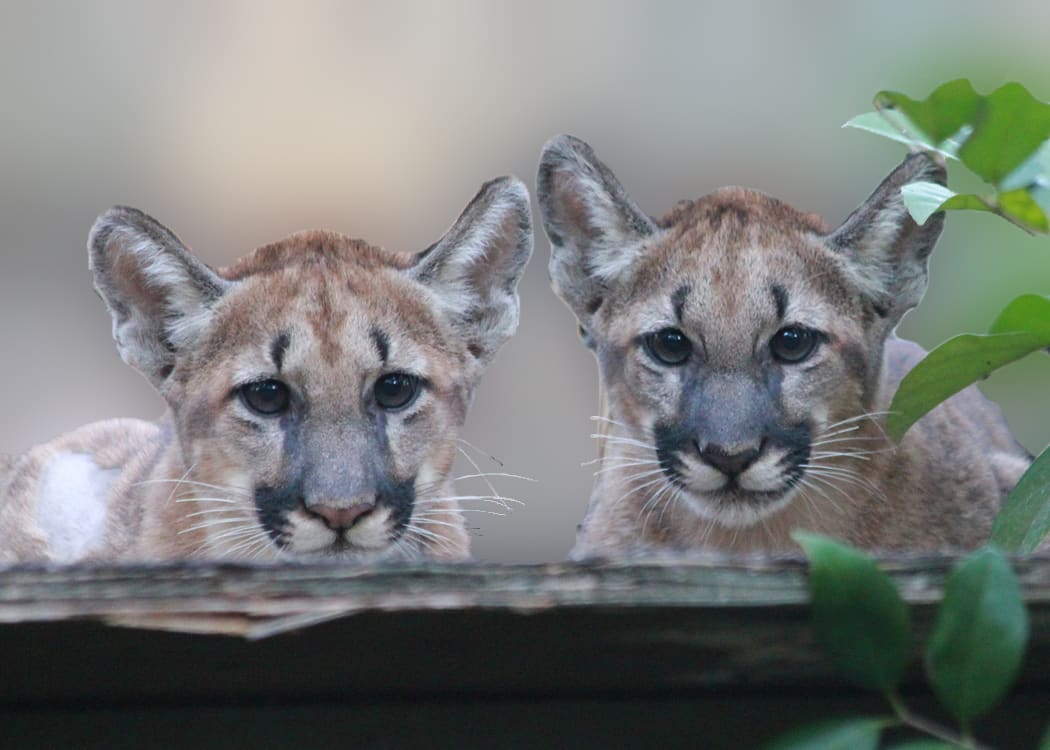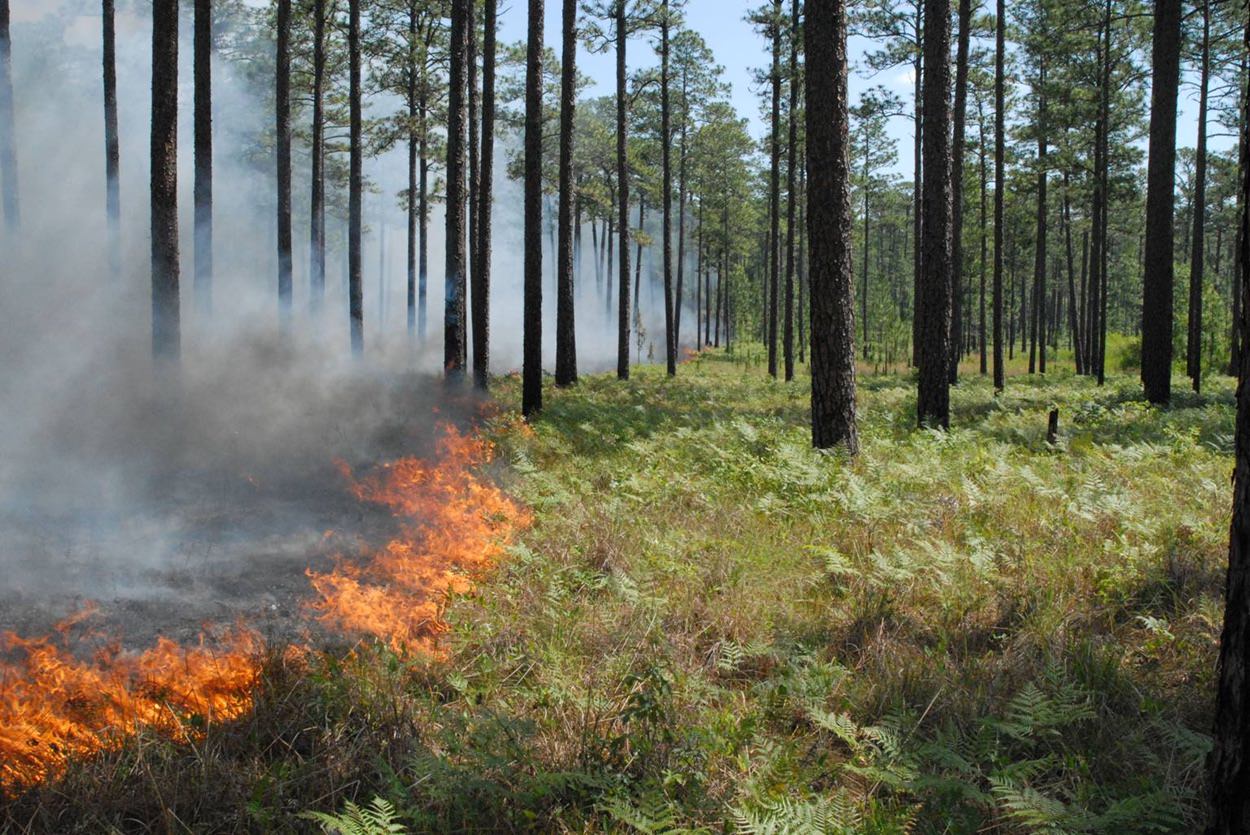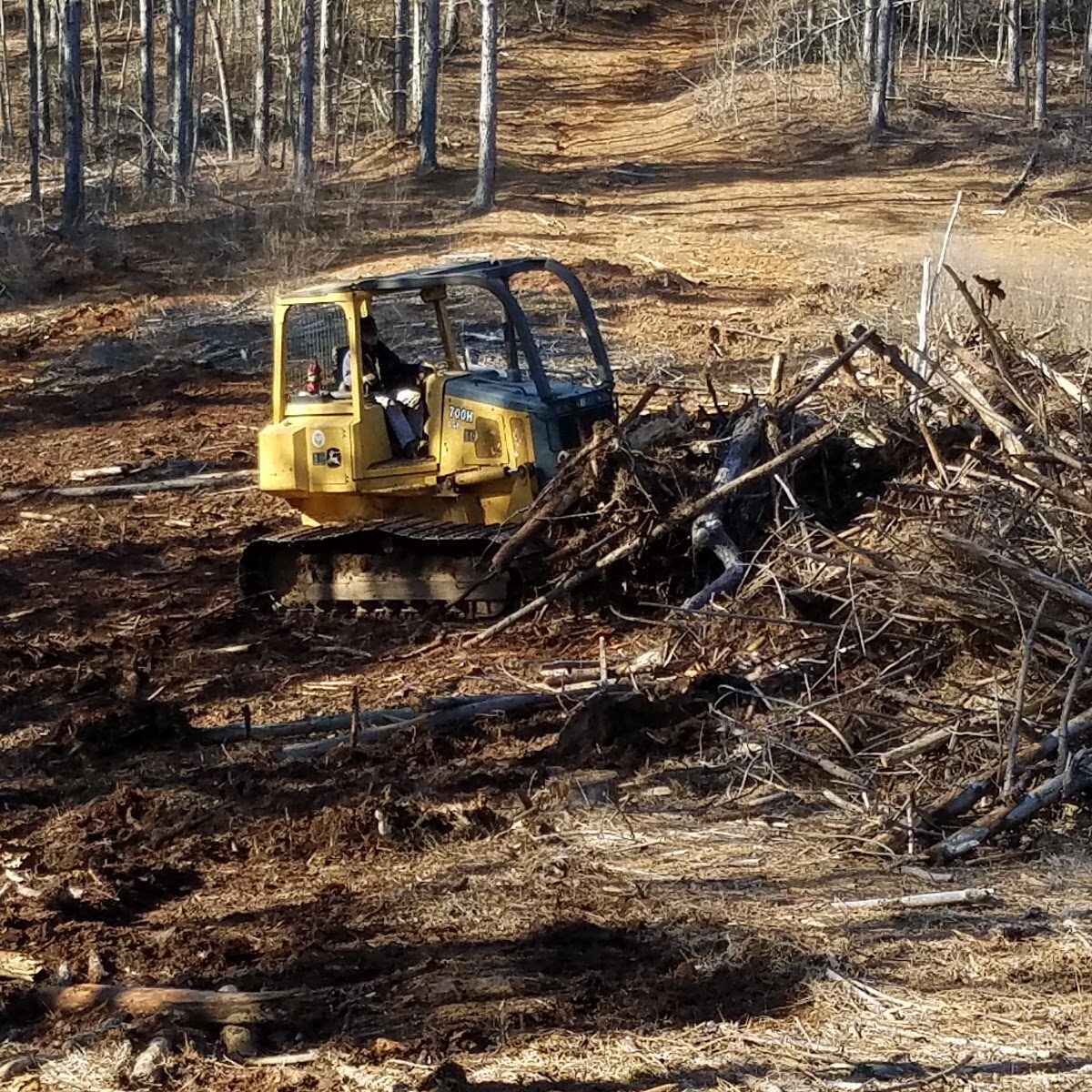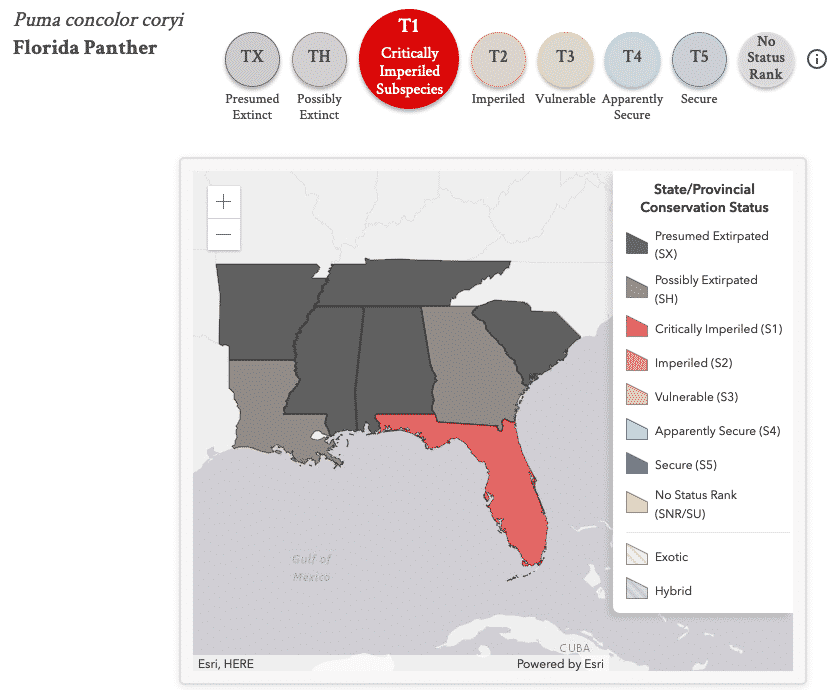Florida Panther
Puma concolor coryi
Status: Critically Imperiled
The Florida Panther, also known as mountain lion, cougar, or puma, is a subspecies of the Puma concolor. The adult Florida panthers are a tan color with dark brown shadows around their ears, sides of their muzzle, and at the tip of their tail. Average adult Florida panther weighs about 100 to 160 pounds. The kittens are born with dark brown or black spots on them but as they get older the spots start to fade away.


Habitat & Range
Florida panthers are found in habitats where prey is readily available. Dense understory vegetation helps the panther hide when stalking their prey and also can be used for resting. Most of these panthers inhabitat swamp areas, marshes, and grasslands. Historically, the Florida panther was found in the southeastern U.S. in Texas, Arkansas, Louisiana, Mississippi, Alabama, Georgia, Tennessee, Florida, and South Carolina. As of today, these panthers are only common in the southern part of Florida.
Food Web & Energy Flow
Florida panthers are carnivores and mostly eat deer, wild hogs, and many small mammals. These panthers are considered opportunistic predators which means they hunt what is available and easiest.
Relationship to Fire
The Florida panther uses the dense understory to help hide out from prey while they are stalking. They often use the understory for resting and shelter. The understory is important to these panthers and other animals in the longleaf pine flatwoods. Only way the understory is maintained is through frequent controlled fires which help promote growth on the forest floor.

Human Impacts/ Threats
Land Use Conversion

Ideal habitat area this species is being converted into land for houses, roads, agriculture, or even to grow different types of trees to sell.
Fire Suppression

Many people have been raised to think of all fires in the forest as bad, so they go to a lot of effort to prevent or suppress them. But longleaf forests NEED fire!
Fear

Historically, many settlers would hunt the Florida panther because they believed the panthers were attacking their livestock. Settlers also feared that the panthers would attack them.
Mining

In areas of this species' range, people have found gravel deposits that requires mining to collect and sell. Mining affects groundwater levels, which can harm bog habitats.
Conservation Status
Historically, Florida panthers were found in most southeastern regions of the U.S. from Arkansas to Florida. Today, these panthers are only found in Florida. Their habitat has been destroyed to help with agriculture land development and also mining, causing the panthers to become Critically Imperiled.

Resources
U.S. Fish & Wildlife Service. Florida Panther
National Park Service. Species Profile
Center for Biological Diversity. Saving the Florida Panther
